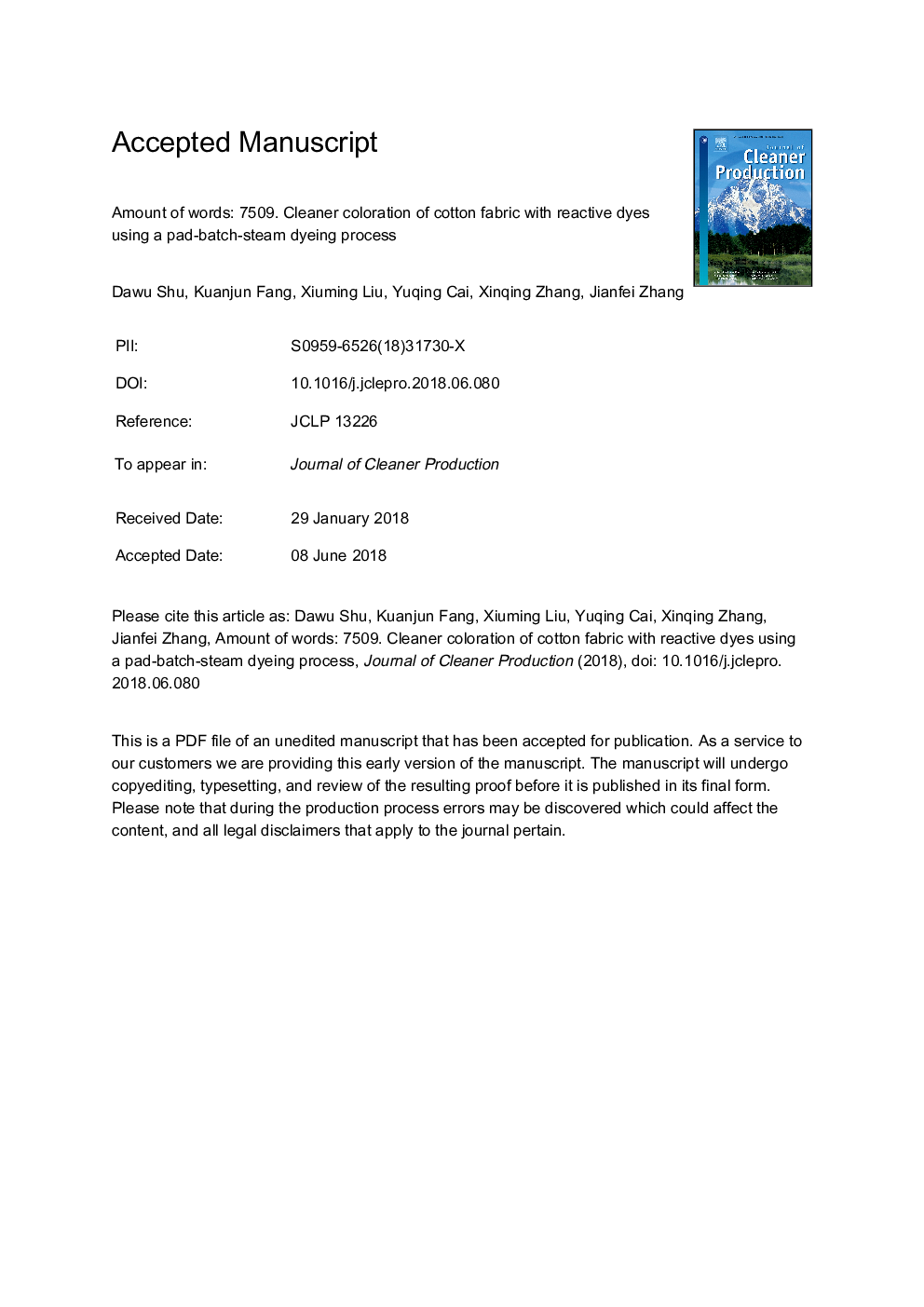| Article ID | Journal | Published Year | Pages | File Type |
|---|---|---|---|---|
| 8094039 | Journal of Cleaner Production | 2018 | 42 Pages |
Abstract
To enhance dye fixation rate in pad-steam dyeing, a preliminary research was carried out to examine that the effect of the water content in water-ethanol mixed medium on reactive dyeing of cotton fabrics. The fabric temperature and dyeing properties as affected by the water content were investigated. Based on the results, a batch procedure was incorporated in the pad-steam dyeing to enhance the interactions between reactive dye and cellulosic fibers. The dyeing properties, chemicals and energy consumption of the pad-batch-steam process and conventional pad-steam process were also evaluated. The results show that reducing the water content could expedite fabric heating and improve dyeing properties significantly. The batching time of 60â¯min, 20â¯g/L of sodium carbonate and steaming time of 2.0â¯min were appropriate for dyeing cotton fabric with 25â¯g/L of C.I. Reactive Violet 5. Compared with conventional pad-steam dyeing, the color strength and dye fixation rates of dyed fabrics using pad-batch-steam dyeing process were maximum increased by 21.4% and 16.1%, respectively. The proposed dyeing process saved 13.7% dye, 33.3% sodium carbonate, 33.3% steam and 28.5% industrial electricity. The pad-batch-steam dyeing process has significant potential for enhancing dye fixation rate and reducing the dyeing effluent, which is a major step towards cleaner dyeing of cotton fabrics.
Keywords
Related Topics
Physical Sciences and Engineering
Energy
Renewable Energy, Sustainability and the Environment
Authors
Dawu Shu, Kuanjun Fang, Xiuming Liu, Yuqing Cai, Xinqing Zhang, Jianfei Zhang,
